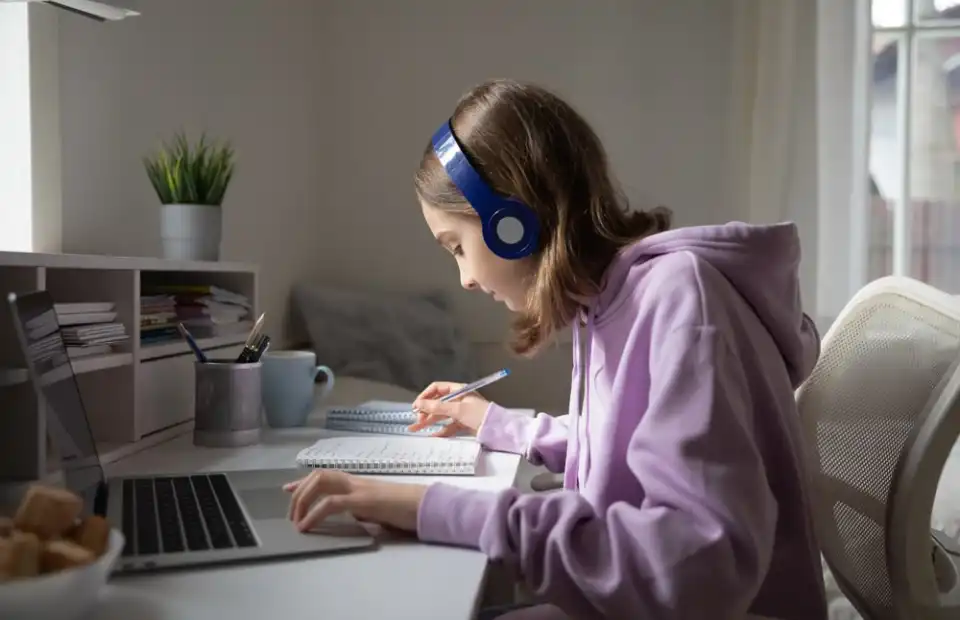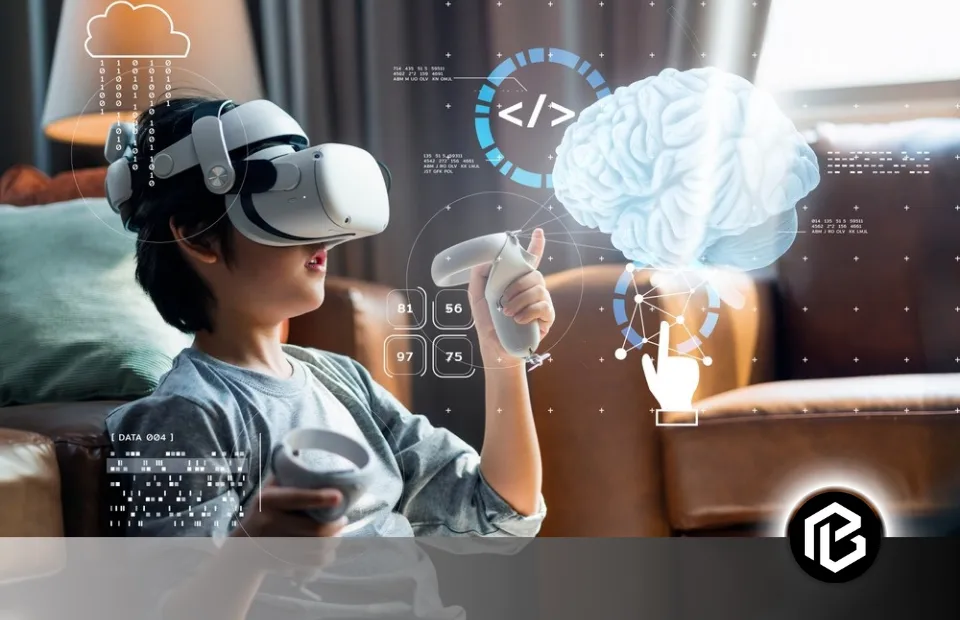Did you know gadgets have become the new best friends of modern children? The impact of gadgets on children’s development is fascinating and, at times, a bit concerning. Back in the times, things were so different.
Today’s modern child is growing up in a digital age. They have access to smartphones, social media, and any information. However, excessive screen time and dependence on gadgets can also have negative effects on children’s social skills, physical activity, and attention span but gadgets are Essential in the Digital Age.
According to a study, children who spend too much time on gadgets may experience Speech or language delay, Childhood depression and Negative impact on character development.
- Understanding Child Development
- Critical Period OF Child's Brain Development
- Advantages of Gadgets
- Disadvantages of Gadgets
- Diseases Caused by Excessive Use of Gadgets
- Emotional Development
- The Debate on Screen Time Limits
- Unsecure Cyber Space
- How to Provide a better Life to your Child?
- Ethical Considerations
- Conclusion
- Frequently Asked Questions on the Impact of Gadgets
Understanding Child Development
A child’s development has 5 stages. These stages can be impacted positively as well as negatively with the use of gadgets. These 5 stages are:
- Cognitive Development: For cognitive development, different educational apps can enhance learning and problem-solving skills. On the other hand, excessive screen time can hinder cognitive development and can limit the hands-on experience and problem-solving of your child.
- Social and Emotional Development: Different video calls and interactive games can enhance the social and emotional development of children. Excessive use or inappropriate use of gadgets can lead to a lack of face-to-face interactions and emotional connections.
- Speech and Language Development: The use of gadgets can support speech and language development through language learning apps and voice reignition technology. However, it can also delay development as it limits the opportunities for verbal communication.
- Fine Motor Skill Development: These skills can be developed through touchscreen interactions, but excessive use can also affect these skills and can replace physical play and manipulative activities.
- Gross Motor Skill Development: The gadgets can increase gross skills development through interactive exercise apps. Excessive screen time can lead to a sedentary lifestyle, affecting gross skill development.
Where the use of gadgets has positive effects, it can also have negative impacts, such as reduced physical activity, delayed social skills, and potential addiction. It is important to set a limit and monitor gadget usage for healthy development.
Critical Period OF Child’s Brain Development
Young brains need a lot of stimuli to develop, particularly from birth to age three, what’s known as the critical period. As vision, hearing, and language, these needs are based on centuries of human evolution, which used to have nothing to do with screens. Consider a child watching a video instead of listening to a story that his parents read from a book. It’s totally a different experience for the brain. Rather than listening and imagining a story, the screen presents them with everything, reducing their imagination abilities. So, certain cognitive systems become underdeveloped.
Scientists also argue that screen time can prepare a child’s brain for an increasingly fast-paced stimulus world. So, screen time is sometimes good, and it isn’t created equal, either. The key to this is moderation. Limiting daily screen time and making sure that that child can function in modern life not only with the screen but in the real world too.
Advantages of Gadgets

Gadgets are the future of life. Everyone depends on these for daily routine tasks. These gadgets are shaping our future by offering numerous advantages. These gadgets have transformed the way we live and interact with the environment, providing us with countless advantages that enhance convenience, connectivity, and efficiency in our daily lives.
1. Educational Potential
Gadgets have a tremendous impact on the educational potential of students. In today’s technological world, gadget-assisted learning offers numerous benefits, such as access to vast amounts of information, trending news, and educational resources.
- Gadget-Assisted Learning
With gadgets, students can access online libraries, multimedia content, and educational apps. These advantages can help children to become more efficient and gather reliable information in their homes.
- Fostering Critical Thinking and Creativity
Furthermore, gadgets play an important role in fostering critical thinking and creativity. Students can engage in interactive activities that require problem-solving skills and creative thinking. For example, online educational games, puzzles, or quizzes encourage students to think critically, analyze situations, and brainstorm innovative solutions.
In addition, gadgets provide opportunities for collaborative learning. Students can collaborate with teachers through online platforms, discussion forums, and video conferencing tools.
2. Stay Home, Stay Safe
Gadgets have become a lifesaver for students in the world during the COVID-19 pandemic. This has highlighted the importance of online education systems, and gadgets play a significant role in making it possible. Students were able to continue their learning from the safety of their homes. Students were able to attend virtual lectures, submit online assignments, and access online libraries to make their free time more refreshing by reading different books.
Disadvantages of Gadgets

1. Online Gaming
It is no surprise that kids and teens are addicted to gadgets, like smartphones and video games, and can’t spend an hour without them, let alone an entire day. Spending a lot of time on screen playing video games can make your child addicted to it and can have several health impacts.
2. Social Breakdown
Children who are too involved in technology restrain social relationships. When kids are too addicted to the gadgets, the attachment can put hurdles in the way of your child making relations with family and friends of his age. He often wants to live in his world and is unaware of the reality of society.
3. Less interest in Natural Phenomenon
There is a potential impact of excessive gadget use on a child’s interest in natural phenomena. Gadgets are entertaining, but spending too much on gadgets can limit your child’s opportunities for outdoor activities, games, and exploration. To compete with their friends online and get higher scores, they miss out on the chance to appreciate the beauty of nature, go on walks, and participate in sports. Ultimately, gadgets win and have a negative impact on the child’s physical health and overall well-being.
Diseases Caused by Excessive Use of Gadgets
Excessive use of gadgets can impact the child’s health, contributing to various health concerns.
1. Weak Eye Sight
Electronic devices like different gadgets are the main cause of eye problems in children—overuse of gadgets results in dry eyes, causing multiple eye infections. The prolonged exposure to the screen puts strain on the eyes.
2. Weak Memory
Research suggests that excessive use of gadgets can affect attention span and cognitive development in children. It may have an impact on memory retention. Many different activities, such as reading books, solving puzzles, and playing memory games, are encouraged.
3. No Physical Fitness
If a child spends a lot of time on gadgets, there will be no time left for outdoor activities. A lack of physical games results in a lack of physical development. Moreover, spending a lot of time sitting in front of the television leads to increased snacking and unmindful eating habits.
4. Triggers Neck and Back Pain
Continuous use of gadgets affects your back and results in severe back pain and other muscle issues in children. Poor sitting posture triggers neck pain, which results in sore neck muscles.
5. Poor Posture
Neck and backaches at a young age are very harmful to kids since they affect the child’s posture for a lifetime if not corrected on time.
6. Sleep Disturbances and Irregular Sleep
Due to the excessive use of gadgets, children can have irregular sleep patterns, which can affect overall health and cognitive function.
7. Sense of Isolation
Increased screen time reduces overall social time, subsequently increasing the amount of time a child spends alone. The child starts developing depression, stress, and anxiety. This can be concerning as he grows older.
8. Mental Health
The children’s mental health can be disturbed as excessive screen time can impact emotional well-being. It can cause anxiety in children and they feel high depression.
Emotional Development
- The Role of Gadgets in Shaping Emotional Intelligence
Gadgets can help in shaping the emotional intelligence of children. Through interactive apps, games, and educational online content, gadgets can provide the opportunity for children to learn about emotions, empathy, and social skills. On the other hand, addiction to these gadgets can negatively affect emotional intelligence. It can limit social interactions, which leads to reduced empathy and social skills. They are more used to their comfort zone.
- Get Interested in Unrealistic Things
Sometimes, when children get too addicted to gadgets, they get interested in unrealistic things. They settle for an unrealistic perception of things due to watching online content, social media, and video games. In this case, parents should keep a check and balance on their children.
The Debate on Screen Time Limits
- Experts’ Viewpoints on Screen Time Recommendations
Limiting children’s screen time is still up for discussion. Experts often emphasize the need for age-specific screen time recommendations. The American Academy of Pediatrics advises limiting screen time usage for children of the age of 2 to 5 up to 1 hour of high-quality content. However, it is important to consider the quality of screen time and balance it with other activities like physical activities, outdoor games, and social interactions.
- Finding the Right Balance for Children’s Healthy Development
Every child is unique. Parents should keep a balance between screen timing and physical activities that are best for an individual. In today’s digital era, keeping up to date with technology is also very important. For kids who are to grow and develop their abilities, a balance should be maintained as technology is helpful for students to learn, but spending too much time on screen can be harmful.
- The More Screen Time, the Less Academic Interest
There is a growing concern that more screen time means students are less focused on their academic studies. Binge-watching television, different vlogs on YouTube, and playing video games can reduce the interest of students in their studies. Parents and teachers should keep an eye on the child’s behaviour and make a flexible schedule.
- Blue Light Exposure
Exposure to blue light from the screen, especially at night, can create disturbed sleeping patterns and harm the eye. It is important to teach children the importance of screen-free bedtimes, which can enhance good sleeping patterns.
Unsecure Cyber Space
Cybersecurity concerns and child protection is a very important, crucial, and often neglected point. Children who use online gadgets may face cybersecurity dangers and run into the leakage of their data. Therefore, children should learn about the online safety of their data from their parents and keep safe passwords to reduce scams and increase the protection of personal data. Cybersecurity Experts are working on advanced algorithms to reduce cyber threats faced by children.
How to Provide a better Life to your Child?

Parenting in the Digital Age
1. Balancing Gadget Use and Parental Guidance
Parenting in the digital era is a very delicate step. It is to keep a balance between letting your children use technology and providing them with advice on how to use it effectively. Here are a few points that parents can consider:
- Set Clear Boundaries: Parents can specify specific conditions for their children under which they can use the gadgets. They can apply some restrictions on time, websites, or other things and can explain the guidelines properly to the children.
- Lead By Example: Children often follow their parents as role models. So, you can guide them on how to use technology in a good way.
- Encourage Offline Activities: Parents can encourage their children to take part in offline games. They can play any outdoor game with their children, go on walks, or arrange picnics on weekends.
2. Strategies to Maximize Benefits and Minimize Harm
These are some of the strategies to maximize benefits and minimize harm. These are:
- Educational Content: Parents can introduce their children to some good educational apps to increase their productivity. Like they can solve online quizzes, play memory-efficient games, and can use apps to set timers for their studies.
- Quality Screen Time: Prioritize the quality screen times. Watch the things that increase creativity, enhance critical thinking, and encourage problem-solving.
- Online Safety: Teach your children about online safety as parents. Your children should know how to keep their data protected through certain tricks like applying security.
Ethical Considerations
Respecting your children’s rights in the digital era is very important. Respect your children’s privacy, and don’t share it without their permission. Also, teach them about online privacy settings. Teach your children to get permission from others before using their pictures, sound, or any other online content for posting. Teach your child to post ethical content and be a good person on social media. Describe the disadvantages of uploading bad or unethical content to your children.
Conclusion
In conclusion, the impact of gadgets on children’s development has a wide range of variations, including how they develop emotionally, engage in learning, and are exposed to different cultures. For children to develop versatile personalities, screen time and other activities must be balanced. To ensure that kids make full use of technology while minimizing risks, parents and other adults should place a high priority on open communication, digital literacy, and responsible gadget usage.
Frequently Asked Questions on the Impact of Gadgets
What is the ideal screen time for children of different ages?
The ideal screen time is different for different ages of children, but for children from 2 to 5 years old, it is recommended to limit it to one hour.
How can parents ensure the educational value of gadgets?
Parents can ensure the educational value of gadgets by selecting high-quality apps that are suitable for their children’s learning goals.
What are some alternatives to gadgets for children’s development?
The alternatives to the gadgets are outdoor play, reading books, arts and crafts, sports, and quality time with family.





